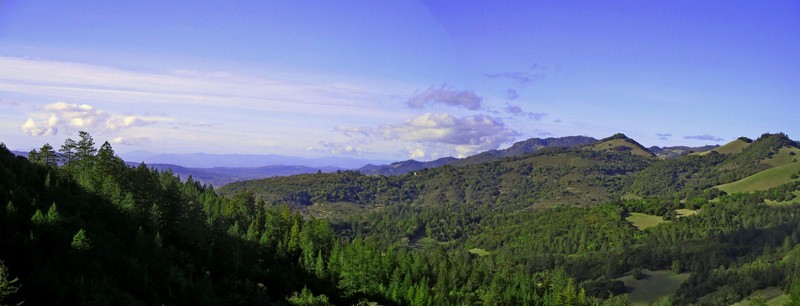Fractals provide a mathematical means of describing natural objects that do not easily conform to linear geometry. Examples of linear geometry would be lines and circles as well as the properties most typically ascribed to
crystalline structures.
One may think of geometric fractals as being endlessly repeating self-similar patterns, that when magnified by computer software, continually replicates into smaller and smaller versions of the original image.
So what are the building blocks used to create fractals? Glad you asked. It's basically a mix of differential calculus and trigonometry, used for calculating lengths and angular rotations, all rolled up into what is collectively known as Complex math. Therefore, it can be reasoned that advanced math does serve some useful purpose after all in this case producing nifty one of a
kind art objects!!
Since their discovery, it has become clear that the geometry of fractals and geometry of nature share many similar attributes. Of course, there is a world of difference in fractals that occur in nature and fractals generated in the virtual world of computerized math routines. Firstly natural fractals are severely impacted by physical constraints. Think of a tree that miscalculates the weight to volume ratio of a branch. When stressed beyond normal tolerance levels, the limb breaks, often resulting in unforeseen consequences!
In this blog section, we will examine how fractals can be used to generate a Mandala.
In various spiritual traditions, Mandala’s which are typically geometrically concentric diagrams that represents the cosmos metaphysically or symbolically, may be employed for focusing attention of aspirants and adepts, as a spiritual teaching tool, for establishing a sacred space, and as a technique to aid in meditation.
The example Mandala’s shown here were created by first generating an interesting fractal pattern, then cutting a pie shaped segment from that pattern. The pie slice angle can be varied, which allows for different shaped polygons. The image is then rotated while being overlaid on itself. And that’s how an almost infinite set of unusual Mandala designs may be produced!
Reverend Steve Waites, M.Th
Sacred Foundations, Inc.
Trustee, Instructor
Reverend Waites has spent a lifetime studying sacred geometry,
leylines and indigenous cultures and rituals.
We look forward to his upcoming articles on fractals.





No comments:
Post a Comment